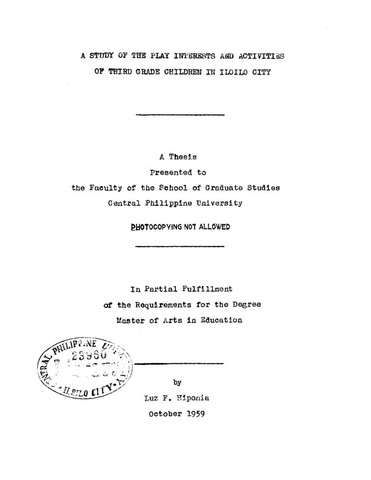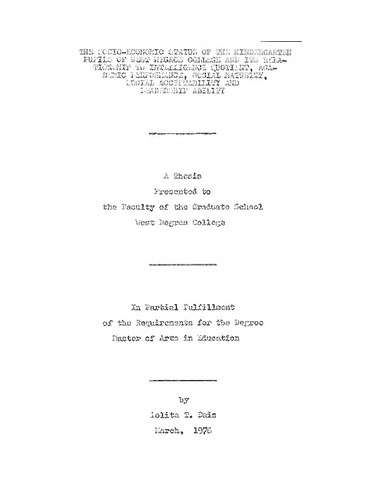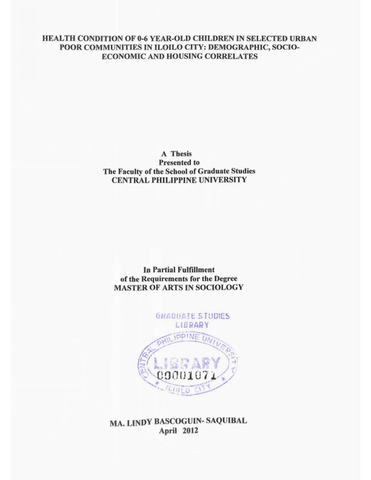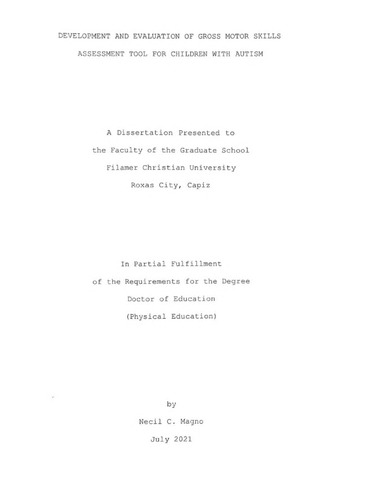| dc.description.abstract | Play appears to be a natural tendency among children and obviously should be closely connected with any system of education. Play is difficult to define. Misunderstanding of the true psychological nature of play activities undoubtedly accounts for many unwise parental and pedagogical practices, While there is no doubt that to be of recreational value to the organism, play should contain a definite element of spontaneity, it would be overly simple to conclude, therefore, that play activities should never be supervised.
In attempting to improve the child's social life, the elementary school needs to reckon with all other social groups or institutions. As far as possible, it should work with and seek to improve all these socializing agencies. Moreover, since the child is being molded by his out-of-school environment, only as the school vitalizes its environment can it effect desirable social changes in the pupils. Extensive group activities, including group play are essential. As Morgan says:
"All training in social adaptation must be by indirect teaching and never by preachments as to the value of acquiring friends. Play is the best way of effecting social contacts without the child being aware that he is adjusting to other children. In play the child learns to take for granted his cooperation with other children and in play he learns to understand them. Adjusting to other children is not presented to him as a virtue; it is all a part of the game. He detects the little things which are not socially acceptable, he sees when he has done a mean thing, and he learns to like the other children without any realization of what is happening to him. In team work he learns the pleasure of being necessary to the others. This is really the ideal way to learn to get along with people."
Play is an expression of the child's mental life. It is his way of learning through experimenting with his environment. Organization and problem-solving in play are correlated with mental development. In the early years, spontaneous play is the child's own way of self-education, since through play he learns skills, learns to use his environment purposefully, and works with the impressions he receives imaginatively and creatively.
Play unquestionably has many functions. In some cases it may represent sheer exuberance or "blowing off steam." Imaginative play may serve as an escape from reality, a means of vicarious experience. But, no matter what the form, through play the child gains experiences and does the thinking that he applies to problem-solving. His insights grow out of his knowledge and experience gained through play. Through play a child learns more than in any other way. He uses his body vigorously, thinks clearly and well in working out his problems, and is happily engaged in situations of his own planning.
Even in the later years of childhood, games and dramatic play have a unique role in giving the child skill and background. The teacher who capitalizes on the child's delight in spontaneous play will discover here a strong motive power to learning. The child's play will also reveal to the teacher his genuine concerns and interests, as well as his needs and problems.
The problem
Every school day a large number of primary school children come pouring out of school after classes in the morning and in the afternoon. What do they feel like doing? Most of them start to run about. They do not move very fast or dodge very well, but they shout and laugh and make a good deal of noise. Two or three children look on, seeming loath to quit the shelter of the railings where they happily lean. Why do these children not join in the fun? By and by a happy chattering guides one to the place where the girls are playing "house." They have set up some old newspapers to cover the space between the fence and the trunk of an old acacia tree. Why do the boys not give a second look at this "silly exercise" as they call it? These questions have prompted the investigator to make this study.
The purpose of this investigation was to find out the play interests of children from the ages of eight to twelve years. Undertaken at the same time was to attempt to discover the sex differences, the influence of the seasons, the environment, or the economic class, on the activities of these children. The following questions formed the basis for this study:
1. What are the interests of children from the ages of eight to twelve years? This is really the problem that has a considerable bearing on the ability of parents and teachers alike to understand their children. Almost everyone will agree that if you understand a child's play interests, you will understand better his needs. What, then, are the play interests of these children?
2. Do all children have the same play interests? Why do the boys call doll play a "silly exercise?" How do the play interests of boys differ from those of the girls?
3. There seem to be games played in some parts of Iloilo City which appear uninteresting to the children in other sections. Does environment have an. effect on the play interests of children?
4. There is also evidence that most games in our city are seasonal. How far is this true?
5. Are all play activities to be encouraged? What things do our children need so that they can enjoy their play better?
The significance of all this is that to understand children, one must be with them, when they are perfectly free to express themselves in any way they choose. Then one may not only observe what they do, but gain some insight into the motives that inspire them end the emotions they experience. One may watch character traits cropping out, developing as the children form wider social contacts. In other words, play, which is surely children's freely chosen activity, is one of the most fruitful fields for an absorbing study for those interested in children. | en_US |





